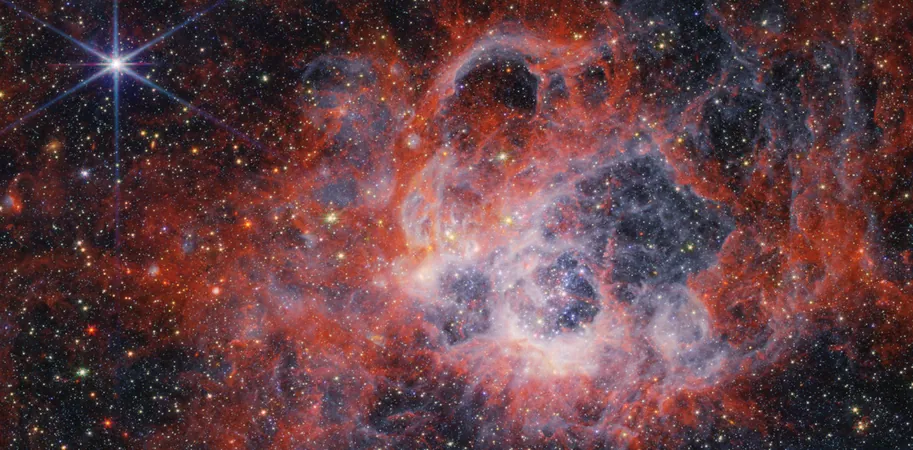
Unlocking the Universe: How the James Webb Space Telescope Sees Beyond Time
2025-06-30
Author: Emily
A Galactic Wonder Awaits!
Imagine a camera so powerful that it captures the light from galaxies over 13 billion years old! This isn’t science fiction; it’s a marvel of modern technology: NASA’s James Webb Space Telescope, which has been exploring the cosmos since its launch in December 2021. Positioned a million miles from Earth, Webb unveils the mysteries of deep space, but how does it achieve such incredible feats?
The Cosmic Time Machine
The secret to Webb’s power lies in its advanced cameras, which operate differently from our eyes. With the ability to capture light from the very beginnings of the universe, astronomers can witness what galaxies looked like billions of years ago—a true time machine for cosmic exploration!
Infrared Vision: Seeing the Unseen
Unlike traditional cameras or even the iconic Hubble Space Telescope, Webb specializes in infrared light—an invisible spectrum to human eyes. As the universe expands, visible light from distant galaxies stretches into infrared wavelengths. So, Webb is designed to detect this faint glow, allowing it to peer deeper into the universe's past.
A Golden Mirror of Secrets
Before the light reaches Webb’s instruments, it is gathered by a massive golden mirror, measuring over 21 feet wide. Made of 18 segments and coated in real gold, this mirror reflects infrared light with remarkable efficiency. The larger the mirror, the more light it collects, which is vital for exploring distant realms of space.
High-Tech Eyes: NIRCam and MIRI
Webb's impressive observational capabilities are thanks to its two main instruments: NIRCam (Near-Infrared Camera) and MIRI (Mid-Infrared Instrument). NIRCam captures breathtaking images and employs a coronagraph to block out starlight, allowing scientists to study faint celestial objects. Meanwhile, MIRI helps uncover cooler cosmic phenomena and signs of life by analyzing the atmospheres of distant planets.
Incredible Sensitivity to Heat
Both instruments are incredibly sensitive, capable of detecting minuscule amounts of heat from billions of light-years away. In fact, NIRCam could sense the warmth of a bumblebee on the Moon! To achieve this, Webb must remain extremely cold, supported by a vast sun shield and specialized cooling technology.
Translating Cosmic Data into Images
Once captured, the infrared light is transformed into digital data by sophisticated sensors. Scientists then process this data on Earth, converting it into vibrant color images. These colors don’t reflect the actual wavelengths of light but are assigned to help illustrate the universe's structure, age, and chemical composition.
Bringing the Universe Closer Than Ever!
Thanks to Webb’s innovative capabilities, we can witness the birth of galaxies, stars, and perhaps even clues about life on distant planets. The James Webb Space Telescope is unlocking the secrets of the universe like never before, allowing us to gaze back in time and discover the cosmos' hidden wonders.









 Brasil (PT)
Brasil (PT)
 Canada (EN)
Canada (EN)
 Chile (ES)
Chile (ES)
 Česko (CS)
Česko (CS)
 대한민국 (KO)
대한민국 (KO)
 España (ES)
España (ES)
 France (FR)
France (FR)
 Hong Kong (EN)
Hong Kong (EN)
 Italia (IT)
Italia (IT)
 日本 (JA)
日本 (JA)
 Magyarország (HU)
Magyarország (HU)
 Norge (NO)
Norge (NO)
 Polska (PL)
Polska (PL)
 Schweiz (DE)
Schweiz (DE)
 Singapore (EN)
Singapore (EN)
 Sverige (SV)
Sverige (SV)
 Suomi (FI)
Suomi (FI)
 Türkiye (TR)
Türkiye (TR)
 الإمارات العربية المتحدة (AR)
الإمارات العربية المتحدة (AR)